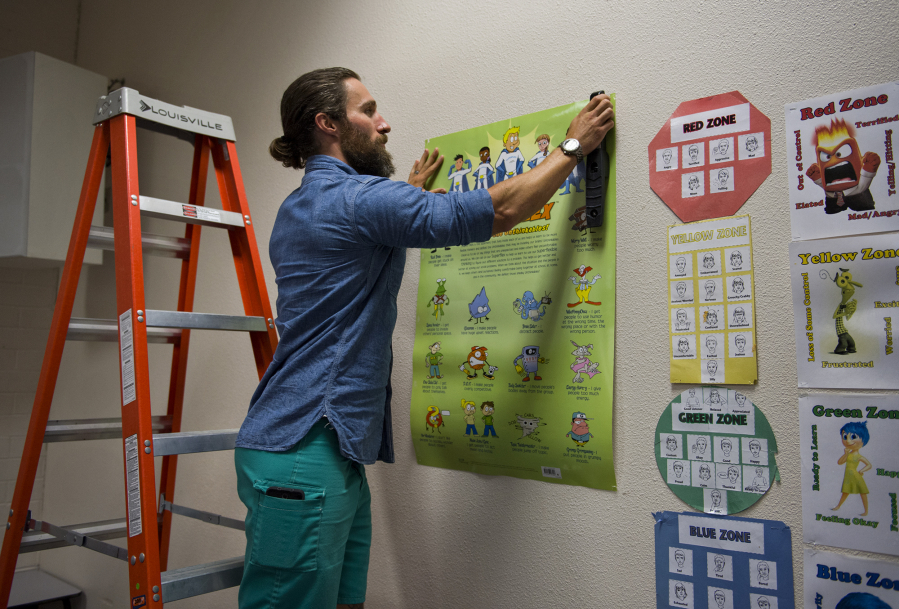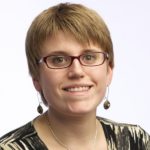Kyle Sharpe’s journey to this day — stapling posters on his classroom’s walls, putting toys in cupboards, planning lessons — was not typical. The Vancouver man left a career in advertising more than a decade ago, hoping to pursue a more meaningful career as a teacher.
Sharpe will begin his first year as a certified teacher Aug. 30 after working as a paraeducator — a classroom assistant — in special education classes at Vancouver Public Schools for two years. This year, he’ll teach his own special education class of kindergartners, first- and second-graders at Chinook Elementary School. He is looking forward to a rewarding career.
“No one is going to come back in 10 years and thank me for selling something,” Sharpe said.
Sharpe is part of a trend of classroom assistants moving to full-time teaching. Area school districts are increasingly tapping paraeducators to cover teacher shortages. The concept is known as “growing your own” — taking employees already invested in the district and helping them become certified teachers, rather than recruiting certified teachers from out of district or even out of state who may be less likely to have local ties.
Educational Service District 112 is at the forefront of that effort locally. Mike Esping, coordinator of educational initiatives and professional learning for ESD 112, said paraeducators are more likely to reflect the communities they teach.
“Typically, they are representative of the community they serve, meaning their background,” Esping said. “That helps them know their community. They know the systems, the people when they enter into the program as an alternative route certification candidate. They have the advantage of being in the school system.”
ESD 112, working with the Battle Ground, Kelso, Vancouver and Washougal school districts, applied and received a grant to certify teachers in special education and for English language learners.
Sharpe was among the first class of 17 to complete the program last year, taking education classes at City University on Saturdays, while working in special education classrooms at various Vancouver schools during the week. Paraeducators are able to participate in the program without paying tuition.
ESD 112 also recently announced it would become the first entity in the state approved to certify teachers outside of colleges and universities. The program, ESD U, will begin taking applications this winter with its inaugural class starting next summer.
“It’s just another way to offer certification routes for those who already have a bachelor’s degree,” Esping said.
According to a 2016 report by the Washington Professional Educator Standards Board, “Grow Your Own Teachers,” Washington schools needed 5,877 new teachers in 2015-2016, but only 3,000 new teaching certificates were issued — a difference of 2,877. If the supply of new teachers stays stagnant year over year, the Superintendent of Public Instruction’s office projects a cumulative teacher shortage of 15,812 by the 2020-2021 school year.
PESB Deputy Director Alexandra Manuel, who helped author last year’s report, said there’s a knowledgable and diverse group of paraeducators to draw from. But training programs need to be affordable, local and allow paraeducators to keep their day jobs in order to become certified teachers.
“It really takes a strategic program to think about how well we help develop the next generation of teachers in their current role as paraeducators,” Manuel said.
Sharpe, for one, said taking classes through the ESD 112 program allowed him to gain experience in the classroom while being supported by other school officials. Though this will be his first year teaching, Sharpe said he feels he has the tools to “run an effective playbook” for his high-need students.
“I think it’s great that the district is seeing the talent they already have in the classroom,” he said. “A program like this breaks down a lot of barriers people have.”





